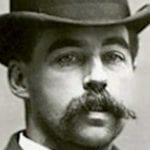 Movies and TV
Movies and TV  Movies and TV
Movies and TV  History
History 10 Things You Didn’t Know About the American National Anthem
 Technology
Technology Top 10 Everyday Tech Buzzwords That Hide a Darker Past
 Humans
Humans 10 Everyday Human Behaviors That Are Actually Survival Instincts
 Animals
Animals 10 Animals That Humiliated and Harmed Historical Leaders
 History
History 10 Most Influential Protests in Modern History
 Creepy
Creepy 10 More Representations of Death from Myth, Legend, and Folktale
 Technology
Technology 10 Scientific Breakthroughs of 2025 That’ll Change Everything
 Our World
Our World 10 Ways Icelandic Culture Makes Other Countries Look Boring
 Misconceptions
Misconceptions 10 Common Misconceptions About the Victorian Era
 Movies and TV
Movies and TV The 10 Coolest Stars to Set Sail on The Love Boat
 History
History 10 Things You Didn’t Know About the American National Anthem
 Technology
Technology Top 10 Everyday Tech Buzzwords That Hide a Darker Past
Who's Behind Listverse?

Jamie Frater
Head Editor
Jamie founded Listverse due to an insatiable desire to share fascinating, obscure, and bizarre facts. He has been a guest speaker on numerous national radio and television stations and is a five time published author.
More About Us Humans
Humans 10 Everyday Human Behaviors That Are Actually Survival Instincts
 Animals
Animals 10 Animals That Humiliated and Harmed Historical Leaders
 History
History 10 Most Influential Protests in Modern History
 Creepy
Creepy 10 More Representations of Death from Myth, Legend, and Folktale
 Technology
Technology 10 Scientific Breakthroughs of 2025 That’ll Change Everything
 Our World
Our World 10 Ways Icelandic Culture Makes Other Countries Look Boring
 Misconceptions
Misconceptions 10 Common Misconceptions About the Victorian Era
Top 10 Compositions of the 20th Century
The 20th Century heralded a new world, one with more defined nations, laws and statutes. It saw the invention of many great things, which have made life significantly easier for most of us. It is, however, common opinion that musical tradition has ceased to be creative – that we have stopped creating and just embraced the works of old. This list aims to disprove this and extol the many relatively unknown works composed after 1900.
Varèse was a French composer of electronic music, exploiting the new timbres that were created by the popularizing of electricity. He explored timbres, rhythm and dynamics, creating a rather barbaric and often percussive sound.
No composition can reflect Varèse’s style as much as Ionization, composed for 13 percussionists. Amongst the instruments are conventional orchestral bass drums and snare drums, and also unique instruments like the lion’s roar and even fire sirens. This results in an extraordinary sound world, full of unprecedented possibilities and combination.
Stockhausen composed extremely similarly to Varèse (something I just realized when I was ranking up the pieces). He, however, also flirted with the ideas of aleatoric music (see Lutos?awski) and serialism (see Berg).
Zyklus is, also, a piece for percussion. The title is German for ‘Circle’, which came from the interesting way the music is to be read. The score can be read from any page, to any direction, and in whatever way the page is set (you can read it upside down).
George Gershwin is a quintessentially American composer. He frequently uses the Jazz and Blues scales in his music, instead of the Diatonic scale used by most composers of the Western classical tradition.
His Rhapsody in Blue, a Piano concerto with backing by a Jazz band, is his Magnum Opus, a work that he will be forever remembered by. It has frequently been used as a reference to the 1920’s, the Jazz age, where money was plentiful and life was good. This piece is nostalgic of better times past.
Glass is probably the most recent composer in this list – he continues to compose prolifically. His style has been described as minimalist, reflecting the slowly evolving ostinato in his music. His music also reflects a strong grounding in counterpoint in the style of Mozart and Bach.
His opera Einstein on the Beach lasts 5 hours with no intermission, so long that audiences are free to enter and leave as they please. This opera is distinct in that it has no story plot. Instead, it shows various scenes, all alluding to parts of Einstein’s theories and life. When premiered, this opera promised to revolutionize the face of opera, and this it did.
Penderecki is a composer that focuses on extended techniques and unique playing styles on conventional instruments and structures. He is possibly best known for his astounding ‘Threnody to the Victims of Hiroshima’. However, as this was already mentioned in another list, I chose his Polish Requiem.
By choosing a Requiem Mass, Penderecki merges one of the oldest form of music (the first Requiem was by Ockeghem in the Renaissance period) with extended playing techniques. He uses wails and short blasts from the choir and voices, instead of the traditional SATB choruses. The addition of a Polish text in the end causes this to be a truly unique composition.
In the late 19th century, Arnold Schönberg devised a new composing technique that threw away centuries of harmony and counterpoint – the Serialist style. Followers became known as the Second Viennese School, with composers such as Anton Webern. Berg, however, is the composer that brought serialism to popular culture.
Wozzeck is an opera based on a surprisingly unheroic plot. What makes this a major stepping-stone for musical history is that this is the first major Opera from the 20th century style, one that incorporates the advant garde ideas of the period. The opera became so popular that it allowed Berg to live his life off royalties.
Copland composes in a distinct style from fellow American George Gershwin. While Gershwin has a style more suited for cities and clubs, Copland incorporates more rural material, including purely American factors, such as cowboys.
The Fanfare for the Common Man was written when Copland was approached to write a fanfare for the opening of the radio. When asked for a dedication, Copland decided to dedicate this to the Common Man, the most pushing factor for America’s victory in WWII.
Cage was a revolutionary – he pioneered the use of unconventional instruments such as keys and paper. One of his most striking innovations is the prepared piano, where he puts in washers and nails into the piano, causing a dry and percussive sound.
4’33” is essentially what it is, 4 minutes and 33 seconds of music. The music that is heard, however, is not played by the performer. Instead, the performer goes on stage and times the 4 minutes and 33 seconds. The listener hears the accidental sounds in the concert hall, whether it be the air-conditioning or the cars outside. What is thought to be silent is no longer silent, as reflected in the Zen teachings that inspired Cage.
Lutos?awski was one of Poland’s greatest composers, standing alongside Chopin and Penderecki. Lutos?awski was the first to be awarded Poland’s greatest honour, the Order of the White Eagle, after independence from the Soviet regime. He specializes in aleatoric (chance) music, where each performance would be different.
The Concerto for Orchestra is inspired from Belá Bártok’s own Concerto for Orchestra. He mimics the Baroque form Concerto Grosso, interweaving Polish tunes. The most striking part of this work is the atonal nature of it: it does not conform to major or minor keys. He integrates this new style with the old forms of Passacaglia and Toccata, amongst others and in so doing creates a unique sound world.
Stravinsky is one of the most influential composers ever, being sometimes called ‘Bach on the wrong notes’. He was voted as one of Times’ 100 people of the century. He draws styles and influences from a wide range of composers, composing in serialist forms, neo-classical forms and neo-baroque forms. Stravinsky’s sorting of timbres are interesting too – his ballet Les Noces has an accompaniment of four pianos.
The Rite of Spring is an archetypal representation of Succès de scandale. On the premier, Camille Saint-Saëns stormed out after the first note, citing the high register of the Bassoon to be a misuse of the instrument. All through the performance, the audiences booed the performers, with its primitive rhythm and scandalous outfits. The crowd later attacked the performers. However, this piece soon gained popularity and appealed to audiences, causing this ballet to be one of the most influential works composed.








